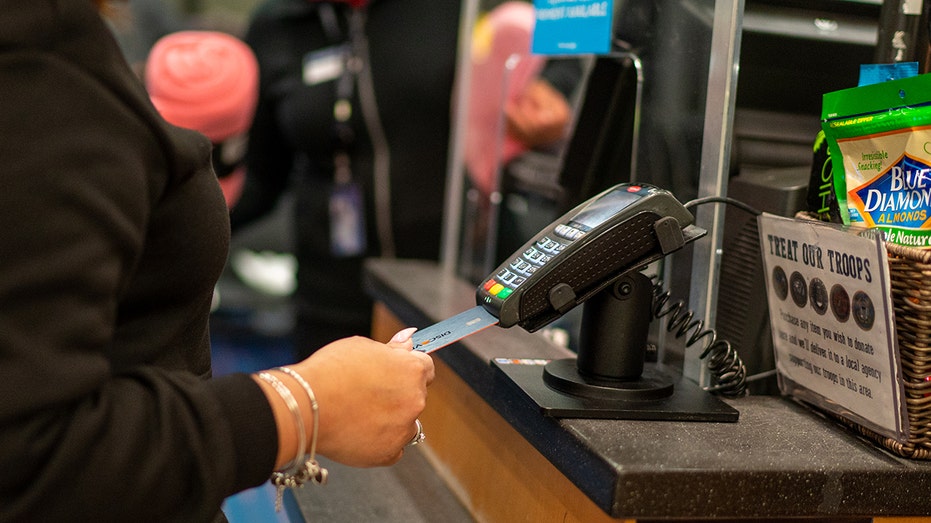‘Kudlow’ panelists Kevin Brady, Art Laffer and Sandra Smith discuss how ‘Bidenomics’ is falling flat with voters.
Americans are racking up more credit card debt as they continue to battle high inflation and interest rates.
New data published Thursday by TransUnion shows the average debt per borrower hit $6,218 at the end of the first quarter, an 8.5% increase from one year ago.
Consumers owe a collective $1.02 trillion in credit card debt.
“As consumers manage expenses amidst stubbornly high inflation, demand for credit continues to be strong despite the currently relatively high interest rates,” said Paul Siegfried, senior vice president and credit card business leader at TransUnion.
AMERICANS ARE CARRYING A RECORD AMOUNT OF HOUSEHOLD DEBT
Most households have seen their monthly expenses rise as the result of the ongoing inflation crisis. Although the consumer price index has fallen from a peak of 9.1%, it remains notably higher than pre-pandemic levels. And when compared with January 2021, before prices began to spike, inflation is up more than 18%.
Most households have seen their monthly expenses rise as the result of the ongoing inflation crisis. (iStock / iStock)
The findings come shortly after the New York Federal Reserve released new data revealing that a growing number of Americans are falling behind on their monthly credit card payments.
The flow of credit card debt moving into delinquency hit 8.9% in the first quarter at an annualized rate, above pre-pandemic levels. In fact, the percentage of credit card balances in serious delinquency — in which payments are at least 90 days late — climbed to its highest level since 2012.
“In the first quarter of 2024, credit card and auto loan transition rates into serious delinquency continued to rise across all age groups,” said Joelle Scally, regional economic principal within the Household and Public Policy Research Division at the New York Fed.
“An increasing number of borrowers missed credit card payments, revealing worsening financial distress among some households.”
New York Fed researchers were uncertain why there was such a notable uptick in delinquencies given the low unemployment rate, but they offered several theories.
AMERICANS EXPECT HIGH INFLATION TO STICK AROUND IN LATEST NY FED SURVEY
It could be that consumers drained the excess savings they built up during the pandemic but are still spending at high levels — even though that money is gone. The spike may also be the result of churn in the labor market. Americans lose their jobs and then find employment elsewhere at a lower salary.

The rise in credit card usage and debt is particularly concerning because interest rates are astronomically high. (Robert Nickelsberg/Getty Images / Getty Images)
Another possibility is that some Americans’ credit scores artificially rose when student loan debt stopped being reported to credit bureaus during the pandemic. As a result, that expanded the pool of who was eligible for a credit card.
Newsfromrss.com
The rise in credit card usage and debt is particularly concerning because interest rates are astronomically high. The average credit card annual percentage rate, or APR, hit a new record of 20.72% last week, according to a Bankrate database that dates to 1985. The previous record was 19% in July 1991.
If people are carrying debt to compensate for steeper prices, they could end up paying more for items in the long run. For instance, if you owe $5,000 in debt, which Americans do on average, current APR levels would mean it would take about 279 months and $8,124 in interest to pay off the debt making the minimum payments.


